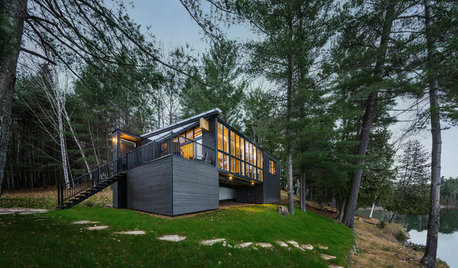Straw mulch
bill-inpnw
15 years ago
Related Stories

GARDENING GUIDESNew Ways to Think About All That Mulch in the Garden
Before you go making a mountain out of a mulch hill, learn the facts about what your plants and soil really want
Full Story
GARDENING GUIDESGarden Myths to Debunk as You Dig This Fall and Rest Over Winter
Termites hate wood mulch, don’t amend soil for trees, avoid gravel in planters — and more nuggets of garden wisdom
Full Story
GROUND COVERSGround Force: 10 Top Ground Covers for Your Garden
Protect your soil from weeds and drought this summer with a living mulch of ground covers
Full Story
EDIBLE GARDENSSummer Crops: How to Grow Tomatoes
Plant tomato seedlings in spring for one of the best tastes of summer, fresh from your backyard
Full Story
GARDENING GUIDES5 Ways to Naturally Win the Weed War
Show irksome weeds no mercy with these tricks for combating them sans chemicals
Full Story
VACATION HOMESHouzz Tour: Childhood Memories Shape a Lakeside Cottage
A Canadian man couldn’t salvage his grandfather’s cottage, but he keeps the family connection alive with a new structure in the same space
Full Story
GARDENING GUIDES10 Easy Edibles for First-Time Gardeners
Focus on these beginner-friendly vegetables, herbs, beans and salad greens to start a home farm with little fuss
Full Story
FALL GARDENING5 Ways to Put Fall Leaves to Work in Your Garden
Improve your soil and yard the organic way with a valuable garden booster that grows on trees
Full Story
FRONT YARD IDEASBefore and After: Front Lawn to Prairie Garden
How they did it: Homeowners create a plan, stick to it and keep the neighbors (and wildlife) in mind
Full Story
GARDENING GUIDES7 Ecofriendly Gardening Ideas That Also Cut Chore Time
Spend less time weeding, less money watering and more moments just sitting back and enjoying your healthy garden
Full Story






windclimber
suze9
Related Professionals
Beachwood Landscape Architects & Landscape Designers · Bellflower Landscape Architects & Landscape Designers · Carson Landscape Architects & Landscape Designers · Parole Landscape Architects & Landscape Designers · Saint Louis Park Landscape Architects & Landscape Designers · Duarte Landscape Contractors · St. Louis Landscape Contractors · Auburn General Contractors · Everett General Contractors · La Marque General Contractors · Pasadena General Contractors · Point Pleasant General Contractors · Cary Decks, Patios & Outdoor Enclosures · Norman Decks, Patios & Outdoor Enclosures · Stafford Decks, Patios & Outdoor Enclosuresfarkee
digdirt2
windclimber
sautesmom Sacramento
dave1mn2
lehua49
elkwc
alley_cat_gw_7b
bill-inpnwOriginal Author
windclimber
bill-inpnwOriginal Author
windclimber